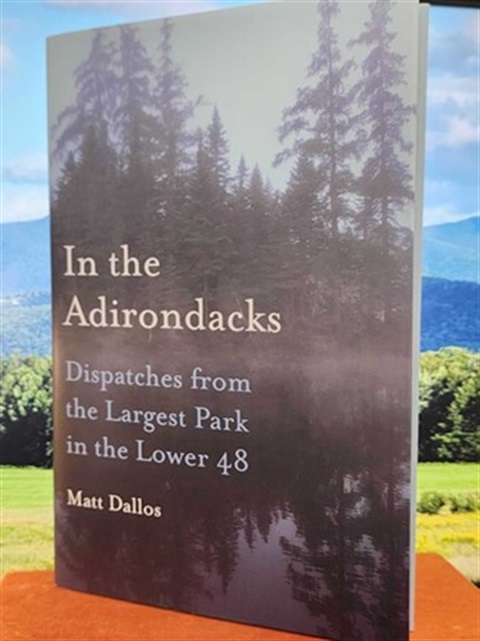In the Adirondacks: Dispatches from the Largest Park in the Lower 48
Published on October 01, 2024

Reviewed by Marybeth Ginsberg
As peak fall foliage season approaches, a trip to the Adirondacks might be in your plans!
One of the first Forever Wild Forest Preserves in the nation, Adirondack Park is often referred to as the Adirondacks, the ‘Dacks, or the Park. Sometimes it is called A-D-K. In his 2023 book, In the Adirondacks, author Matt Dallos writes about the history and the lore that surrounds the park that comprises some 6 million acres and was officially designated Adirondack Park in 1892 by New York State.
While some call the Adirondacks home, the area has become increasingly popular and attracts up to twelve million visitors annually. As both a longtime visitor to the area and an environmental writing instructor, author Matt Dallos based his travelogue on extensive research of the area. Often witty, Dallos recounts stories that characterize the uniqueness of the area. He deftly combines history and lore to provide insight into how the region developed and what the future may hold.
Exploration of the Adirondacks began after the Revolution when scientists, artists, and writers were quickly attracted to the area. From then on, people became infatuated with a wilderness at their backdoor: sportsman and loggers would follow. Later in 1800s, tourists dubbed flatlanders would continue their journeys north. This included developers as well. Lakefront lots were parceled, and camps and hotels were built. The great outdoors appealed to many, and when automobiles became affordable in the 1920s, the area opened up to the middle class. Fast forward to the 1960s when the New York Thruway was built, and the Adirondacks became a “wilderness with exit ramps and rest stops” complete with neon signs, asphalt, and campground bathrooms.
The future prospect of unbridled growth led to the proposal of the creation of a national park in 1967. After the proposal was rejected, negotiations over defining park boundaries would ensue for several years to come. Environmentalists, property owners, and the controversial APA (Adirondak Park Agency) often disagreed over how the area would be preserved. Today, the Adirondack Park is six million acres of public and private land and includes 250 expansive lakes and 46 tall peaks.
In the Adirondacks is as much as about the past as it is about the future. It celebrates this unique region and serves as a cautionary tale. According to Dallos, the identity of the Adirondacks has been shaped by development, and both its identity and stability are at stake. In the last 50 years, development and conservation efforts have taken place simultaneously. He raises questions about the future and explores the tenuous balance that exists in an area that is home to people, animals, and plants, and has become an important part of the American culture and identity.
Matt Dallos is a Ph.D. candidate at Cornell University, where he teaches environmental writing seminars. He lives in the Finger Lakes of New York and has spent years exploring Adirondack Park, the largest park outside of Alaska. He uses an entertaining and animated style to provide a in-depth history and insightful view of the Adirondacks. The book also includes an inset of color photographs.